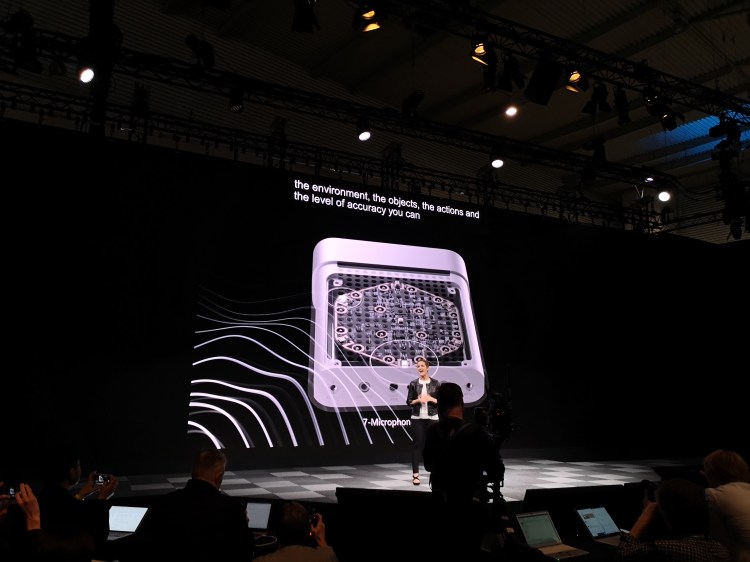Watch all the Transform 2020 sessions on-demand here.
During a keynote at Mobile World Congress 2019 in Barcelona earlier this year, Microsoft took the wraps off of Azure Kinect Developer Kit, a $399 all-in-one perception system for computer vision and speech solutions and the evolution of the Seattle company’s Project Kinect for Azure. Today ahead of its Inspire conference in Las Vegas, Microsoft announced that Azure Kinect Developer Kit is generally available in the U.S. and China and will begin shipping to customers who preordered it.
“Azure Kinect is an intelligent edge device that doesn’t just see and hear but understands the people, the environment, the objects, and their actions,” said Microsoft Azure corporate vice president Julia White in an earlier statement. “It only makes sense for us to create a new device when we have unique capabilities or technology to help move the industry forward.”
Azure Kinect combines a 1-megapixel (1,024 x 1,024 pixel) depth sensor — the same time-of-flight sensor developed for HoloLens 2 — with a 12-megapixel high-depth camera and spatial 7-microphone array, all in a package about 5 inches long and 1.5 inches thick that altogether draws less than 950mw of power. Developers can toggle the field of view (thanks to a global shutter and automatic pixel gain selection), and the Developer Kit works with a range of compute types that can be used together to provide a “panoramic” understanding of the environment.

June 5th: The AI Audit in NYC
Join us next week in NYC to engage with top executive leaders, delving into strategies for auditing AI models to ensure fairness, optimal performance, and ethical compliance across diverse organizations. Secure your attendance for this exclusive invite-only event.
“The level of accuracy you can achieve is unprecedented,” White added.
Through Microsoft’s early adopter program, one customer — Ava Retail — used Azure Kinect and the Azure cloud to develop a self-checkout and grab-and-go shopping platform, while health care systems provider Ocuvera tapped it to detect when patients fall and to proactively alert nurses to likely falls. A third tester, DataMesh, experimented with comparing digital car design models to physical parts on the factory floor.
The launch of Azure Kinect comes nearly nine years after Microsoft released the first Kinect as a motion-sensing gaming peripheral for its Xbox 360 console.


